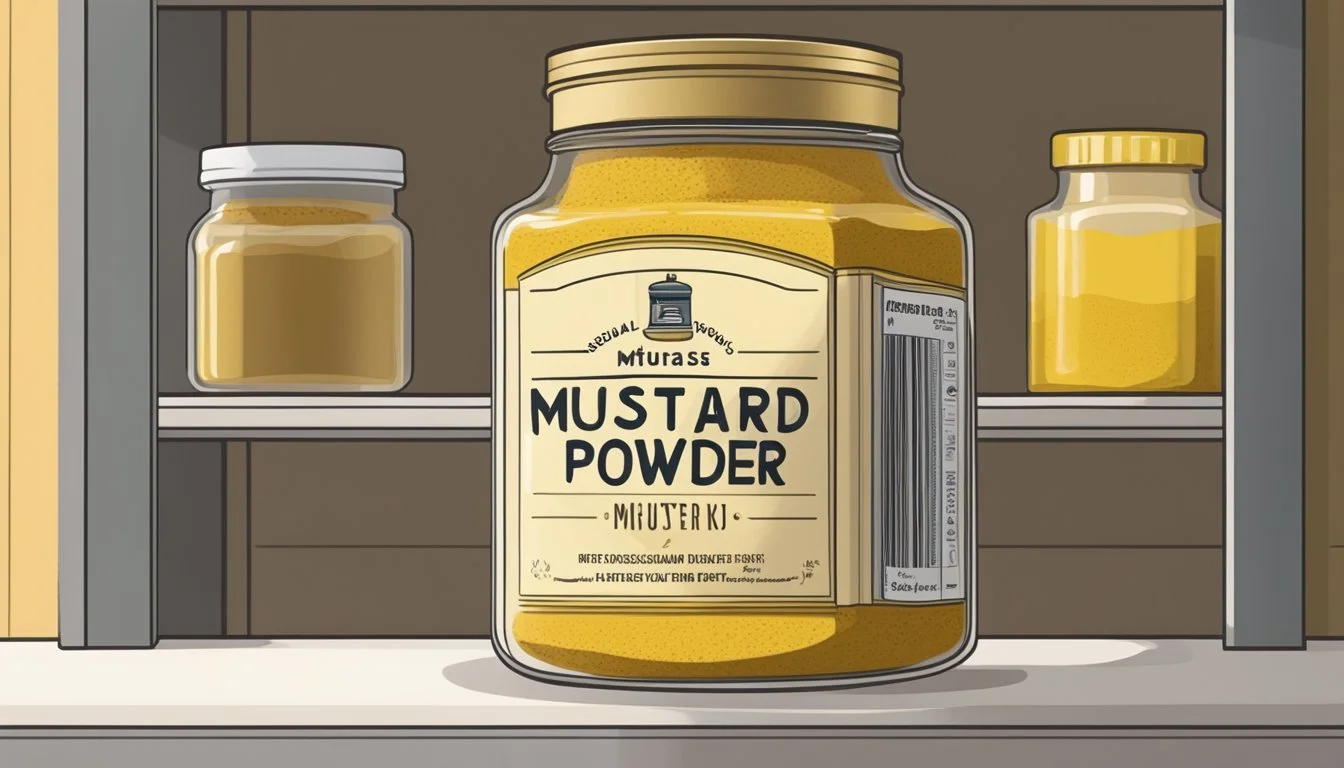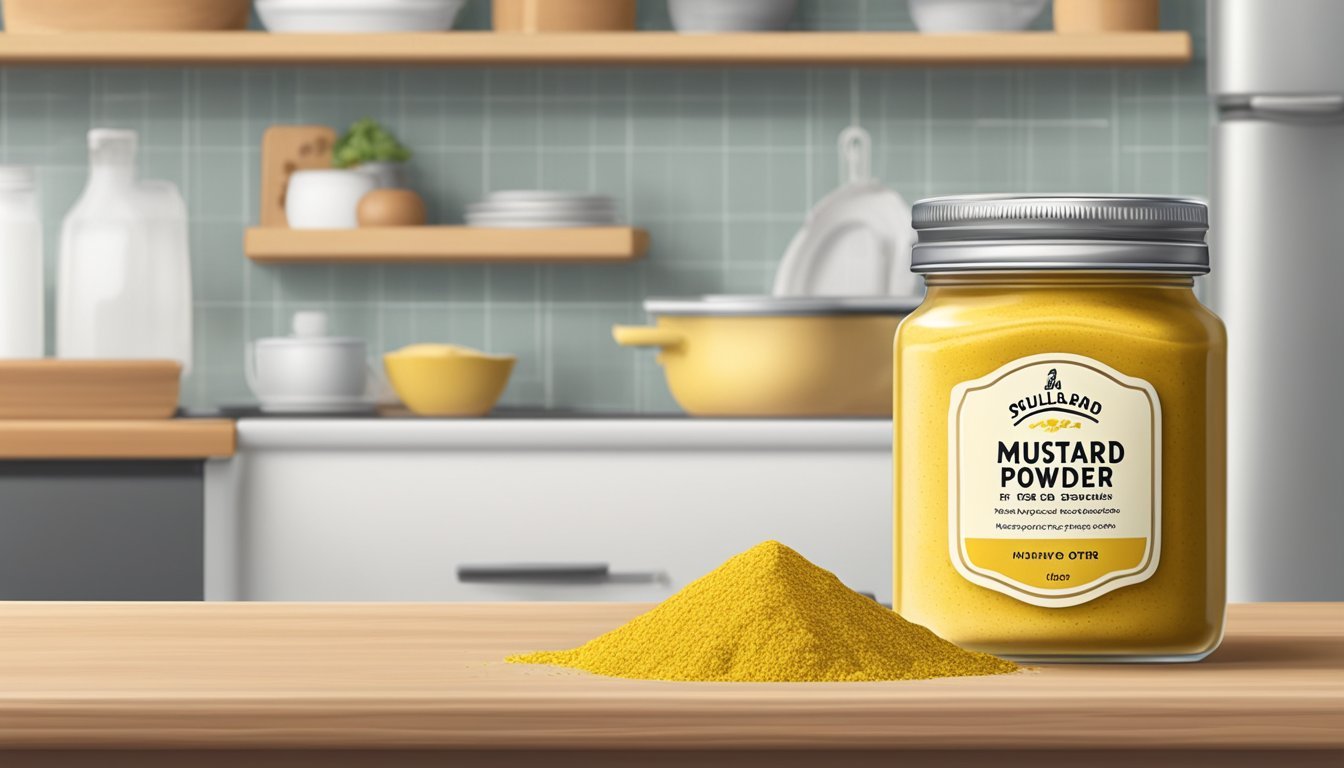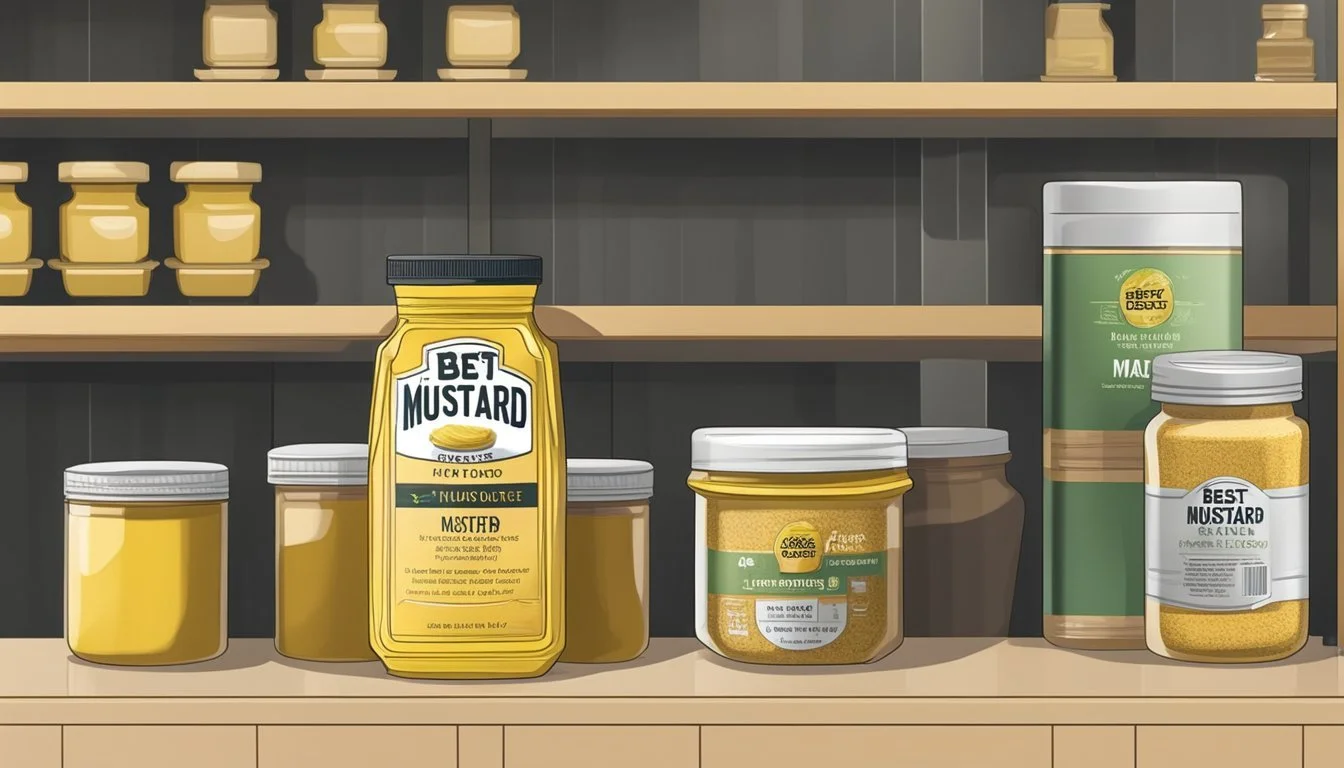How Long Does Mustard Powder Last?
Shelf Life and Storage Tips
Mustard powder is a versatile and long-lasting spice that holds a place in many kitchens for its sharp, tangy flavor profile. Understanding its shelf life is essential for culinary enthusiasts and anyone who wants to maintain the quality of their spices over time. Typically, an unopened container of mustard powder can retain its peak condition for up to 3-4 years. Proper storage is key to preserving its pungency; mustard powder should be kept in a cool, dark location in an airtight container to protect it from moisture and other contaminants that could compromise its flavor and freshness.
Once opened, mustard powder still boasts a commendable shelf life, lasting 1-2 years if stored under the same conditions. Its longevity makes it a reliable ingredient for infrequent usage without the worry of rapid spoilage that fresh products might face. Those who opt to refrigerate their mustard powder can further extend its lifespan, although it's generally not necessary unless the storage conditions fluctuate in temperature and humidity.
This article explores the factors that affect the shelf life of mustard powder, offers practical storage tips, and provides guidance on how to maximize the quality of the spice over time. By adhering to these usage and storage principles, consumers can confidently integrate mustard powder into their culinary practices without compromising on flavor.
Understanding Mustard Powder
Mustard powder, also known as dry mustard, is a versatile and essential ingredient in culinary applications, known for its strong flavor and ability to enhance dishes.
Composition and Types
The primary ingredient of mustard powder is ground mustard seeds, which are sourced from various types of mustard plants—each contributing a different flavor and heat level. The table below outlines common types of mustard powder and their characteristics.
Type Source Flavor Profile Heat Level Yellow White mustard seeds Mild, tangy Low Brown Brown mustard seeds More pungent Medium Black Black mustard seeds Strong, sharp High
Each type of mustard powder may be used differently, depending on the desired flavor and texture in the dish.
Mustard Powder vs. Prepared Mustard
Mustard powder and prepared mustard differ significantly in terms of composition, texture, and usage. Mustard powder is simply the ground seeds and requires no other ingredients for its creation, maintaining a dry and fine texture which allows it to blend into recipes seamlessly.
On the other hand, prepared mustard is a condiment that combines ground mustard seeds with additional ingredients such as water, vinegar, wine, or beer, and often includes spices and seasonings for additional flavor. While mustard powder serves as a base for creating mustard flavors in cooking and food preparation, prepared mustard is typically used as a spread or a dipping sauce, bringing immediate tang and heat to the palate.
The Lifespan of Mustard Powder
Mustard powder is known for its lengthy shelf life, but it is the proper storage conditions that truly extend its usability, preserving its quality well beyond the label’s best by date.
Average Shelf Life
Unopened Mustard Powder:
Typically retains peak quality for 3-4 years.
Can remain usable past the best by date if unopened and stored correctly.
Opened Mustard Powder:
Generally stays good for 1-2 years when stored at room temperature in an airtight container.
May have an indefinite shelf life if refrigerated under optimal conditions.
Factors Affecting Freshness
Storage Conditions:
Temperature: Keeping mustard powder in a cool, dark place helps maintain its quality.
Moisture: Exposure to moisture can degrade the powder; moisture-proof containers are recommended.
Airtight Container: Sealing out air preserves the mustard's flavor and prevents spoilage.
Temperature Change:
Consistent temperature is key. Fluctuations can lead to spoilage and loss of quality.
Proper adherence to these storage guidelines will ensure that the shelf life of mustard powder is maximized, and its flavor and quality are upheld for as long as possible.
Signs of Spoilage
Recognizing the signs of spoilage in mustard powder is essential for food safety and ensuring the quality of flavor in cooking. While mustard powder tends to have a long shelf life, it's still susceptible to spoilage under certain conditions.
Visual and Textural Changes
Visual cues are often the first indication that mustard powder has gone bad. One should inspect the powder for any changes in color; the vibrant yellow hue may become dull, indicating a loss of potency or potential spoilage. Texture is another sign to be aware of. Clumping or caking of the powder suggests moisture intrusion which can lead to mold growth. If mold is present, one must discard the mustard powder immediately as it is not safe for consumption.
Changes in Smell and Taste
Mustard powder should have a distinctively sharp and slightly spicy smell. A change in odor, particularly an absence or a musty smell, indicates spoilage. As for the taste, fresh mustard powder retains a strong and pungent flavor. If the powder tastes bland or has an off-flavor, it should be considered spoiled. It's crucial for the consumer to trust their senses; a mustard powder that smells or tastes different from when it was fresh is likely no longer suitable for use.
Proper Storage Practices
Proper storage is crucial for maintaining the quality and extending the shelf life of mustard powder. It involves choosing the right containers and ensuring optimal conditions.
Best Containers for Storage
An airtight container is essential to prevent moisture and other contaminants from spoiling the mustard powder. Glass jars with tight-sealing lids are preferred for their non-reactive nature and ability to keep contents dry. Plastic squeeze bottles are not ideal for storing mustard powder as they may not provide an adequate seal compared to airtight containers.
Preferred: Glass jars with tight-sealing lids
Avoid: Plastic squeeze bottles
Optimal Storage Conditions
To preserve mustard powder's freshness and potency, storing it in a cool, dark place is recommended. A pantry away from heat sources offers an ideal environment. Keeping it at room temperature is sufficient; however, one may opt for refrigeration to extend shelf life. Refrigeration is particularly advisable once the container is opened.
Location: Pantry or cupboard away from heat
Temperature: Room temperature or cooler
Light Exposure: Minimize by choosing a dark location or opaque containers
Maintaining these conditions will help ensure peak quality, typically allowing unopened mustard powder to last 3-4 years and opened mustard powder to last 1-2 years.
Safety and Consumption
When it comes to mustard powder, both food safety and the quality of taste are critical factors to consider. Proper storage is essential to maintain freshness and prevent contamination, ensuring that mustard powder can be safely consumed even after its best-before date.
Food Safety and Mustard Powder
Mustard powder, when unopened and stored properly, can retain peak quality for 3-4 years, often lasting well past its best-before date. The absence of moisture and other contaminants is key in preventing spoilage. Food safety is generally not a concern with mustard powder unless there is visible mold growth or an off smell indicating contamination. It's important to store mustard powder in a cool, dry place, and once opened, ensure the container is sealed tightly to minimize exposure to air and potential cross-contamination.
Using Expired Mustard Powder
Consuming mustard powder after its best-before date is largely a matter of quality rather than safety. Mustard powder can be consumed indefinitely if stored correctly, but its potency in terms of taste and freshness may diminish over time. The quality of expired mustard powder will degrade gradually, so using it as close to the best-before date as possible is advisable for optimal flavor. If the mustard powder has been stored in a refrigerator, it could last for a longer period, maintaining a better quality as opposed to room temperature storage. Users should inspect the mustard powder for any signs of spoilage such as unusual odors or appearance, and discard if any contamination is suspected.
Maximizing Mustard Powder Uses
Maximizing the shelf life of mustard powder involves understanding its culinary potential and how to effectively pair its flavors. By engaging in these practices, one can ensure the mustard powder is used efficiently before it loses its potency.
Culinary Applications
Mustard powder offers a versatile range of uses in the kitchen. Its bold taste and pungent flavor make it an ideal seasoning for enhancing dishes. They can utilize it as a foundational ingredient for homemade mustards, where individuals can tailor the intensity and flavor profile by adding vinegar, honey, or herbs. In addition, mustard powder acts as a stabilizer and emulsifier in homemade mayonnaise or dressings.
Marinades and Rubs: A sprinkle of mustard powder can elevate a marinade's ability to tenderize meats like chicken or add depth to vegetable roast flavorings.
Sauces and Dips: Integrating mustard powder into sauces or dips offers a tangy twist, suitable for sandwiches, burgers, or as a condiment for a variety of foods.
Seasoning Blends: They can incorporate it into spice rubs or seasoning mixes to create complex flavor layers in stews and grilled items.
Flavor Pairings and Recipes
The zesty flavor of mustard powder pairs well with a multitude of recipes and ingredients:
Meat Dishes: Mustard powder complements the savoriness of meats, enhancing the natural flavors without overpowering them.
Vegetables: The sharpness of mustard powder can cut through the earthiness of roasted vegetables, offering a pleasant contrast.
Sandwiches and Burgers: When added to condiments or used in their preparation, mustard powder provides a zesty kick that enhances these staple foods.
Notable Flavor Pairings:
Burgers: Mustard powder, garlic powder, (how long does garlic powder last?) (how long does garlic powder last?) paprika
Chicken: Mustard powder, thyme, honey
Vegetables: Mustard powder, olive oil, lemon zest (how long does lemon zest last?)
In conclusion, mustard powder presents an opportunity to experiment and discover new flavor combinations that can transform everyday meals into memorable culinary experiences.
Miscellaneous Considerations
When considering the shelf life of mustard powder, one must not only look at the timeframes but also the factors that significantly affect its longevity, such as temperature fluctuations and packaging variances between brands.
Dealing with Temperature Changes
Temperature change is a key aspect in the preservation of mustard powder’s quality. While mustard powder is relatively stable, significant fluctuations in temperature can compromise its flavor and potency. Heat accelerates the degradation process, whereas storing mustard powder in a cooler or refrigerated environment can help maintain its depth of flavor. For instance, American mustard powder benefits from a cool, consistent temperature to retain its characteristic sharpness, whereas the more robust Chinese mustard may withstand slight temperature variations a bit better.
Understanding Packaging and Brands
The type of packaging and the brand can also influence the shelf life of mustard powder. Generally, products with high vinyl content in their packaging can shield the powder from moisture and air exposure better than those with minimal to no vinyl, leading to a longer shelf life. Additionally, certain brands might include preservatives that extend the life of their mustard powder, which is commonly found in Dijon mustard variations. Consumers should always check if the packaging is airtight and undamaged to ensure optimal freshness, regardless of brand or mustard variety.









